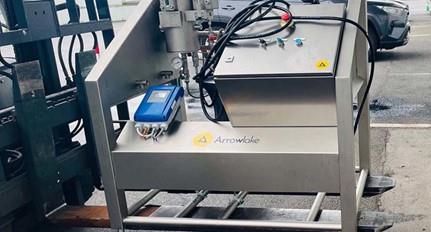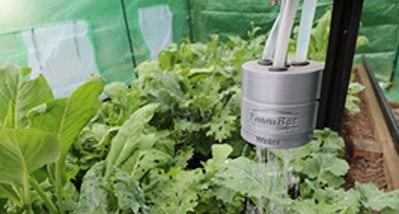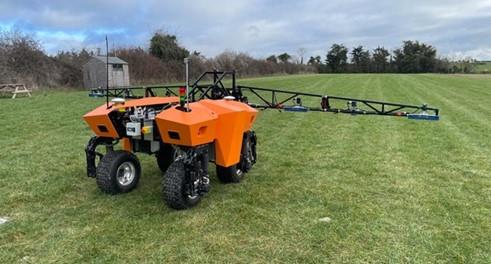Let’s look at the five root causes of the insatiable appetite for digital manufacturing in agriculture to understand how it is making such an impact.
Green Consumers on the Rise
Demand Driver: As environmental awareness grows, consumers increasingly seek products produced through sustainable and environmentally friendly practices. This shift in consumer preferences pressures the agriculture industry to adopt sustainable methods throughout the supply chain, from farming practices to food processing.
Digital Manufacturing Impact: Digital manufacturing enables the agriculture industry to embrace sustainable practices by incorporating precision farming, reducing waste, and optimising resource usage. The demand for digital manufacturing rises as it becomes a key enabler for meeting consumer expectations for environmentally conscious products.

When designing their ozone purification system, The FLO3W®, Arrow Lake, was able to make a rapid decision about the feasibility of their part by using Protolabs’ automated solution to get an immediate initial analysis of manufacturability and cost-effectiveness. Read the case study to find out how they did it.
Regulatory Pressures
Demand Driver: Governments and regulatory bodies worldwide are implementing stricter environmental regulations and standards. Compliance with these regulations is not just a legal requirement but also a necessity for businesses to operate sustainably and maintain their Social License to Operate.
Digital Manufacturing Impact: Digital manufacturing provides the tools and processes necessary for the agriculture industry to meet and exceed regulatory requirements. From precision farming practices to energy-efficient manufacturing techniques, the demand for digital manufacturing is fuelled by the need to align with and surpass regulatory standards.
Small Portions of Resource
Demand Driver: The agriculture industry faces challenges related to resource scarcity, including water, arable land, and energy. Volatile prices for these resources make it imperative for businesses to optimise resource usage and reduce waste to maintain profitability.
Digital Manufacturing Impact: Digital manufacturing technologies, such as precision farming and automated processes, help optimise the use of resources. By reducing waste, improving efficiency, and minimising the environmental impact of agriculture and food processing, digital manufacturing has become a sought-after solution to address resource scarcity and volatile prices.

FarmBot, the world’s first open-source, CNC small-scale farming machine, allows individuals to create and manage a garden using a laptop, tablet, or phone to oversee the automated planting, watering, and monitoring of crops. Protolabs’ product development experts helped FarmBot transition from 3D-printed components to more repeatable and cost-effective injection-moulded parts.
Technological Advancements
Demand Driver: Advances in technology, including renewable energy technologies, efficient manufacturing techniques, and smart systems, are driving the demand for more sustainable products and processes across industries. Businesses that adopt these technologies gain a competitive edge in efficiency, cost-effectiveness, and environmental stewardship.
Digital Manufacturing Impact: Digital manufacturing plays a crucial role in implementing these technological advancements in agriculture. Whether using smart sensors in precision farming or adopting sustainable manufacturing practices, digital manufacturing is at the forefront of technological innovation, driving demand in the agriculture industry.

Small Robot Company developed the 21st-century answer to the 21st-century problem in agriculture, producing more food from less land. Their Tom V4 Per Plant farming makes autonomous robotic farming a reality, meaning more food and less waste at a cheaper cost than ever before. With sustainability as the driving force of their product, they needed to minimise the entire system weight so that ground pressure was reduced, so they partnered with Protolabs to 3D Print two different parts for their latest agri-robot.
Squaring the Circular Economy
Demand Driver: The circular economy approach, emphasising waste reduction, reuse, and recycling, is gaining traction as a sustainable business model. Life Cycle Assessment (LCA) is a key element in assessing the environmental impact of products from creation to disposal.
Digital Manufacturing Impact: Digital manufacturing supports the circular economy by enabling more efficient use of materials, reducing waste in production processes, and promoting developing products with a longer lifespan. The demand for digital manufacturing rises as businesses seek to align with circular economy principles and implement sustainable practices throughout their operations.
The agriculture industry is quickly realising the importance of sustainability and the need to address environmental awareness, regulatory pressures, resource scarcity, technological advancements, and the rise of the circular economy. That's where digital manufacturing comes in as a critical solution to support more eco-friendly and efficient practices in agriculture and food production. It's exciting to see businesses recognising the potential impact of this technology and embracing it to meet these challenges.